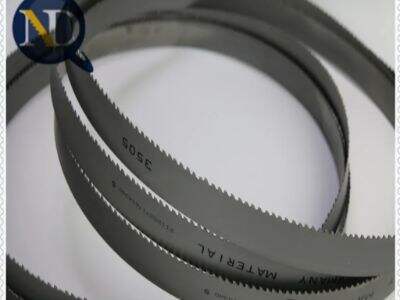If you are tasked with working on a high-volume meat processing line, then having the right blades handy is crucial. Blades are the key to making sure that meat gets efficiently and safely cut, sliced, and processed properly on mostly any level of a meat processing line, a brief overview will provide some basic blade selection for high volume meat processing. We will also talk about high-volume meat processing lines, and how appropriate SWEAT bi metal band saw selection can make your process both productive and safe, and the different kind of blades that are commonly used in these type of systems. Then, some tips and tricks on how to choose the perfect blades for your meat processing needs.
The Basics of Blade Selection for Meat Processing Lines
Meat saws are used to cut, slice, and trim meat products for packaging and distribution. If you are upgrading your blades for a high-volume meat processing line, consider the following: type of meat being cut, volume of meat being sliced, and how big or thin you want each slice to be.
What to Look For When Selecting Blades for High-Throughput Meat Processing?
Key factors to keep in mind when selecting blades for high volume meat processing Material — For one, you need to ensure they are made from tough materials like stainless steel or carbon steel. These items are extremely hard-wearing and are designed for a high level of meat processing.
Blades are supplied in varied styles and preferences as certain types are better for specific cuts. A straight blade, for instance, is excellent for when you need to slice meat into even portions whereas a serrated blade makes sense with tougher cuts.
Making Use Of The Very Best Blades For Your Meat Processing To Guarantee Productivity And Also Security.
Choosing the correct blades for your meat processing facilities can help you maintain ongoing efficiency and workplace safety. Sharp, up-to-date blades play a role in how quickly the processing is done, and SWEAT bimetal bandsaw blades for metal also can help reduce the amount of accidents or injuries sustained from using dull or broken blades.
It is also critical that blades are inspected and kept sharp in accordance to what is required. Sharp blades not only keep productivity high, but they also up safety in the work environment.
Different types of blades Best Blade for High-Volume Meat Processing Lines
Common Blades for High Volume Meat Processing Lines The many blades that may be used in high-volume meat or poultry packaging today fall into several broad types. Some of the common categories are circular blades, band saw blades and last but not the least reciprocating blades.
Band saw blades are best suited for cutting through large cuts of meat, and circular blades are used to slice meat into consistent slices. However, reciprocating blades are after efficiently used for trimming and deboning meat products.
How To Pick the Best Blades for Your Meat Processing Operation?
For all of your meat processing operations, it is critical to decide which blades you are going to use based on the type, volume and size of cut or slices in a cut you wish to produce. Another key factor is to choose blades that are of top-notch materials and kept in shape.
It can also be beneficial to get some advice from a specialist blade supplier like SWEAT so that they, in turn, can help you with selecting your right bi metal bandsaw blade. By applying these methods you can be liable to make your meat processing operations as output-efficient, risk-free, and promising.
Table of Contents
- The Basics of Blade Selection for Meat Processing Lines
- What to Look For When Selecting Blades for High-Throughput Meat Processing?
- Making Use Of The Very Best Blades For Your Meat Processing To Guarantee Productivity And Also Security.
- Different types of blades Best Blade for High-Volume Meat Processing Lines
- How To Pick the Best Blades for Your Meat Processing Operation?


